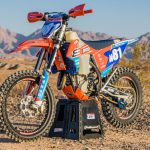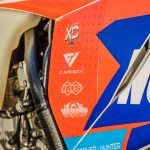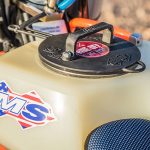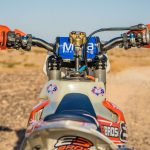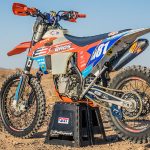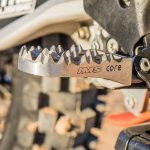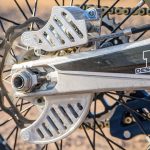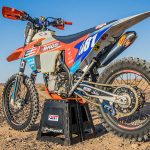Building A Rocket Ship
Story and Photos by Trevor Hunter

We set out to race the 23rd Annual Best In The Desert Vegas To Reno a bit late, but luckily we had a fresh 2019 KTM 450 XC-F ready for battle in the garage. Nick Stover, a fellow member of the 3Bros Racing Team, had just picked the KTM up earlier this year and volunteered his bike with less than twenty hours on it. Starting this race with a newer bike made it pretty easy on us as we wouldn’t have to do much maintenance on the orange machine.

Due to the high speed nature of this race, adding a sixth gear to the five-speed gearbox was all but mandatory. The 450 XC-F doesn’t come with a six-speed tranny like the 350 XC-F does, but the cases accept the added gear so we simply popped it in and hit the ground running. We’ll have a separate story on adding the coveted sixth gear to the 450cc motor very soon. The installation is much simpler than some might think, and it was a welcomed addition whether we’re racing the bike or just out for a trail ride.
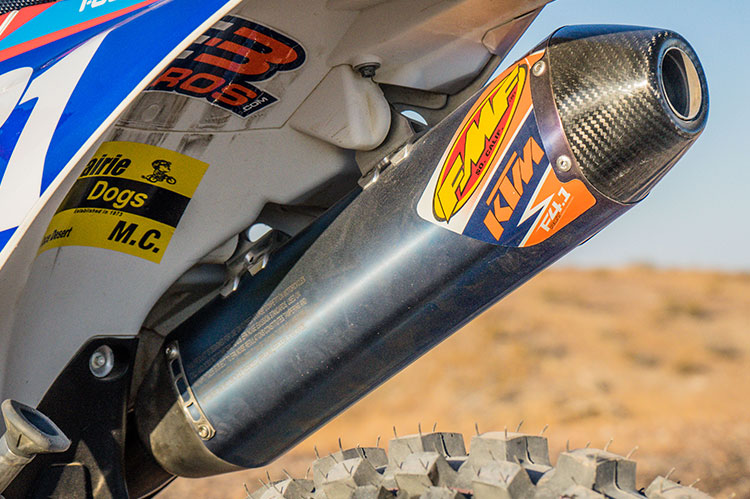
As far as any other motor upgrades, a FMF slip-on exhaust already adorned the pumpkin before deciding to race, so we kept that on for looks and for some performance gains. After spending quite some time on both exhaust systems, Nick felt that the FMF helped liven up the bottom to mid range where the stock system felt flat.
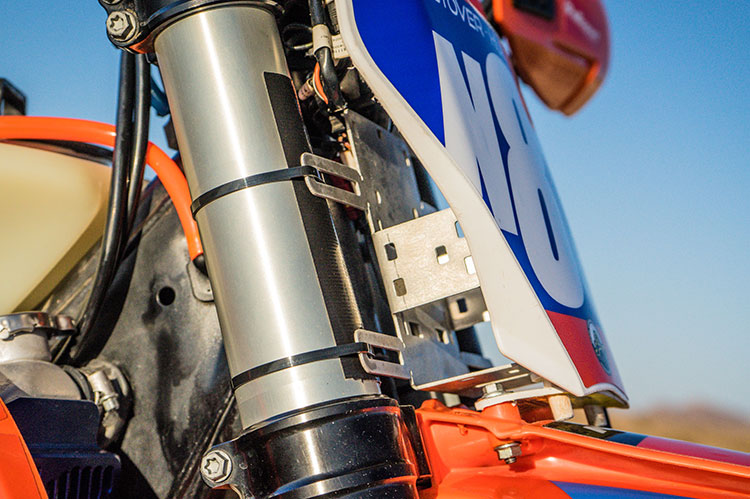
For suspension, Nick already had John Talorico dive into the WP fork and shock for a revalve to his liking. Since we both have a disparity in weights, close to 20lbs, we set the sag right in the middle for the both of us, with 110mm for Nick and 100mm for myself. Nick’s experience with the stock settings found the rear end dancing around in faster whoop sections and JT’s setup helped it track straighter. Additionally, the air forks were harsh in stock trim, but we were able to find some needed plushness in the initial stroke while still maintaining good bottoming with the updated valving.

Our target air pressure in the AER 48 fork was 141 PSI, but due to the early morning start time where the air temperature was low and the forks hadn’t been used yet, we set them to 135 PSI as we knew the air pressure would rise significantly throughout the day. We had plans of rechecking the air pressure and bleeding the air out of the forks at a longer pit stop, but the fork performance never worked poorly so we left them untouched over the 500 miles of racing. The race course is very smooth with mostly graded fire roads and sand washes, so front fork performance wasn’t critical. If we were to do it again, we’d likely soften both ends up a bit so that it worked better in the rocky terrain to minimize the deflection we were having.
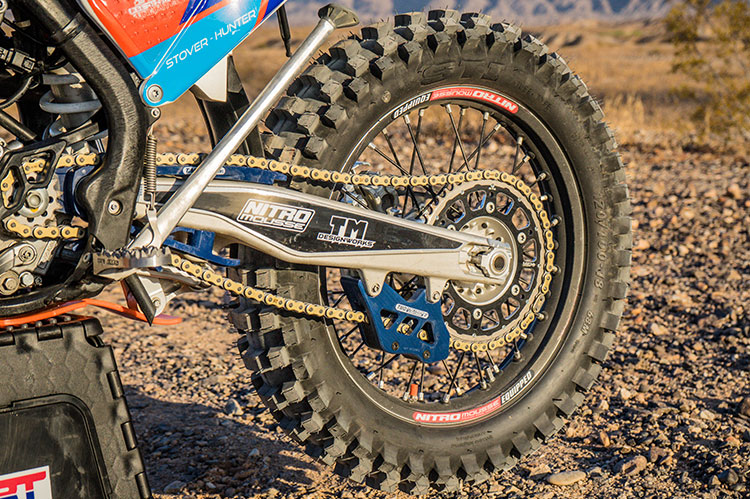
Tires and mousse’s are very critical in a race like this as the speeds are extremely high for a long period of time, and we installed STI tires and Nuetech Nitromousse’s. STI’s new Tech 2 Pro D tires are their off-road tires that have been tested in Baja with the SLR team, and they worked quite well for us. We fitted 120/100-18 rear tires to 140/100-18 mousses for a tight fit, but we were trying to eliminate as much heat buildup as possible to get the mousses to last. We also added Nuetech’s Tubliss rim tape to the inside of our wheels and we had no mousse lube leaking out from the spokes at the end of the race.
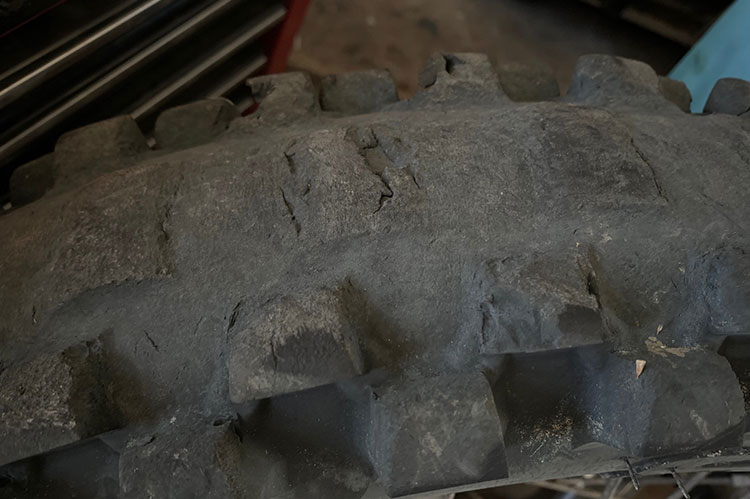
We stretched the rears out to get 250ish miles out of each, though the center knobs were nonexistent in the end, and they hooked up well in the Nevada desert terrain. For the front tire, we used just one tire the entire race with no noticeable performance losses throughout the duration of the event. Braking performance is super critical in this race, and in our pre-race testing, we were very pleased with both the front and rear tire under heavy braking. They tracked straight and predictable, not quite as good as Kenda Parker DT’s which we think are the best under braking, but still plenty good enough to give us confidence in the tires. As a result of stuffing larger mousses in the tires, we suffered a little bit on the performance side as they didn’t have the plushness for the rocks and the rear also didn’t plant onto the flat fire roads quite as well. Still, we didn’t have any mousses fall apart so it was worth it in the end.

To get us to each pit with plenty of gas and even allowing us to skip some pits, we installed a 3.2 gallon IMS tank with a dry-break receiver. 500 miles of racing requires 13 pit stops, and we hit 12 of them to refuel. We did end up skipping pit 11, the remote pit, which had us going just over 70 fast miles on one tank of fuel and we made it with ease. Also, since we’d be on the bike for long periods of time, we planted our feet on IMS’s Core Enduro footpegs for a wider base leading to more comfort and control. Also, they are beefier than the stock foot pegs so we didn’t have to worry about damaging them.
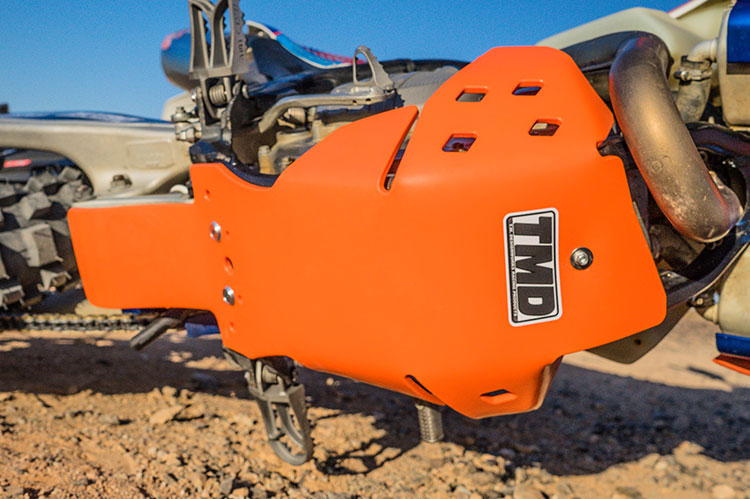

For more durability, we found ourselves with products from TM Designworks and Bullet Proof Designs. We’ve had tremendous success with TM Designworks Slide-N-Guide Kits as stated in our product test, so that was an easy add-on. Also, we needed a skid plate and TMD offers their plastic Full Coverage Skid Plate with an integrated linkage guard. Additionally, prior to race day, we had a crash that resulted in a twisted up radiator, so we got some Bullet Proof Designs Radiator Guards to help stabilize and protect them. They’re an easy, lightweight item to bolt on and don’t add any width to the bike, so the guards are a no brainer. Also, we added their Rear Disc Guard to help protect the rear brakes when busting through rocks at high speeds.


Some other small items were we added ASV F4 levers in hopes of preventing a broken lever. Unfortunately, we found out the hard way that they aren’t completely unbreakable. A slow speed top-over saw us break the lever completely off at the pivot in a way that we don’t normally see. After installing a stock lever, we actually did the exact same thing to the new brake lever, only this time the bike hit the dirt at much higher speeds. We put a fresh DT-1 Super Seal Air Filter in at the beginning of the race, and ran the whole 505 miles one one single filter. We should have changed it when we changed the rear wheel, but minimal hands made every pit tight and we never felt significant performance losses at any time.
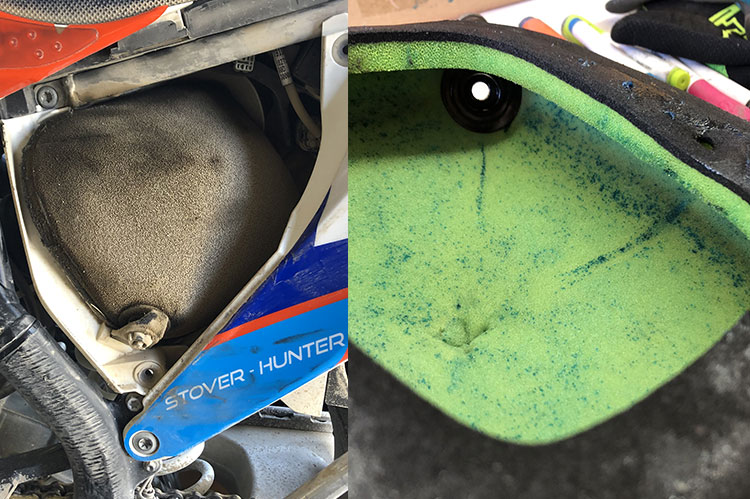
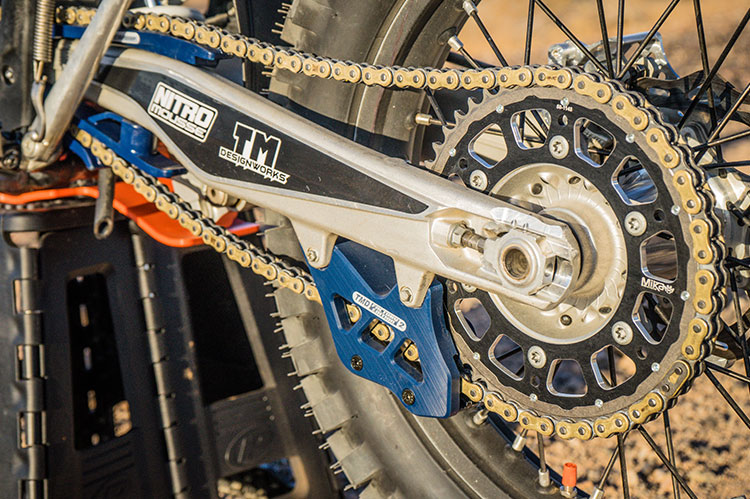
Also, Mika Metals provided us with multiple sprockets that were needed for spare wheels. We upped the countershaft sprocket to a 14T and left the rear sprockets at 48T with their Hybrid sprockets. Gearing up and with the sixth gear, we felt the bike went plenty fast enough and it still pulled fairly hard to get up to speed quickly. My 155lb frame doesn’t weigh quite enough to get the needed traction to the rear wheel at those speeds. Other teams even ran 15/48 gearing, but we liked how the 14/48 gearing performed.

For added comfort, we used XC Gear’s Mako 360 bar mounts paired with Mika’s Raw Series Handlebar. We mounted a Scotts Steering Stabilizer to the front of the bike and it helped a lot with eliminating head shake. With the varying weights of the riders, I mainly struggled with eliminating head shake since I didn’t have as much sag as I’d normally run, so the stabilizer helped mask it for race day. For added grip, we put some AME Grips on the bike as we both run them on our normal setups. Also, we installed a Stompgrip Tank Grip setup on the sides of the bike. Having some grip tape was very beneficial for myself riding the big horsepower 450cc bike as I’m not used to the extra power and every little bit to keep the thing under control was welcomed. Finally, RAD Custom Graphics made the bike look pretty with the orange and blue theme along with our team shirts.
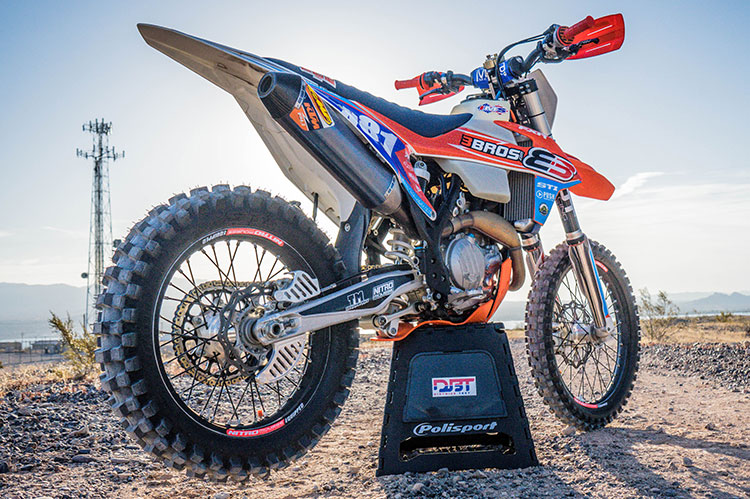
Just want to say a big thanks to Prairie Dogs MC, 1-800-Dent Doc, Shaw and Sons Concrete, and 3 Brothers Racing for helping pay the bills and get us to the start line. Will we see a return in 2020? Only time will tell, but we won’t count it out just yet!
